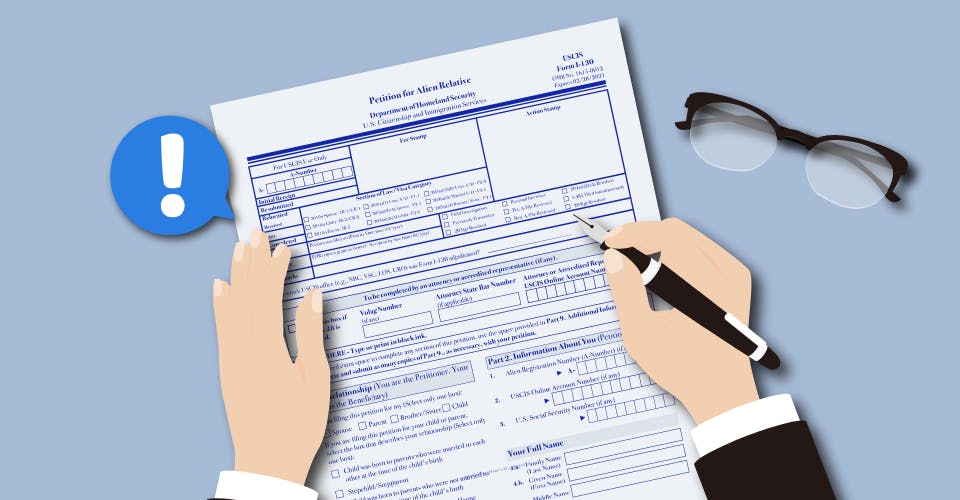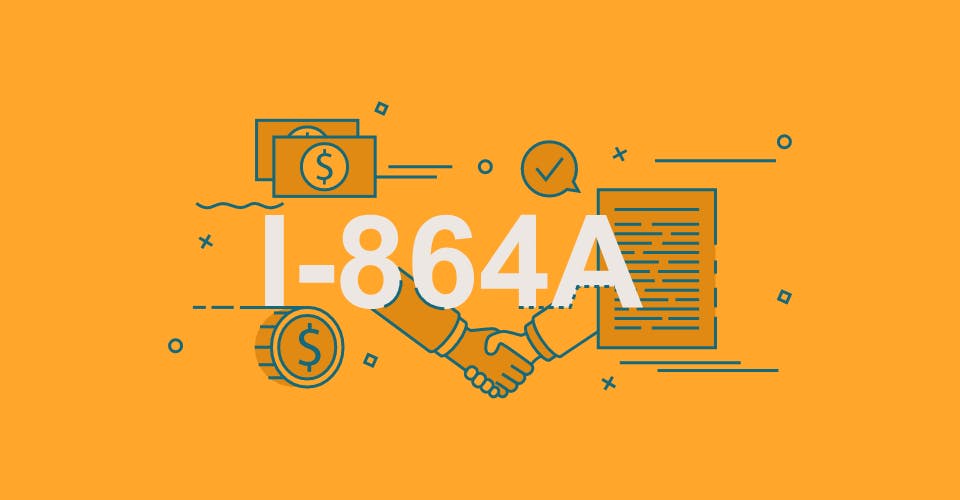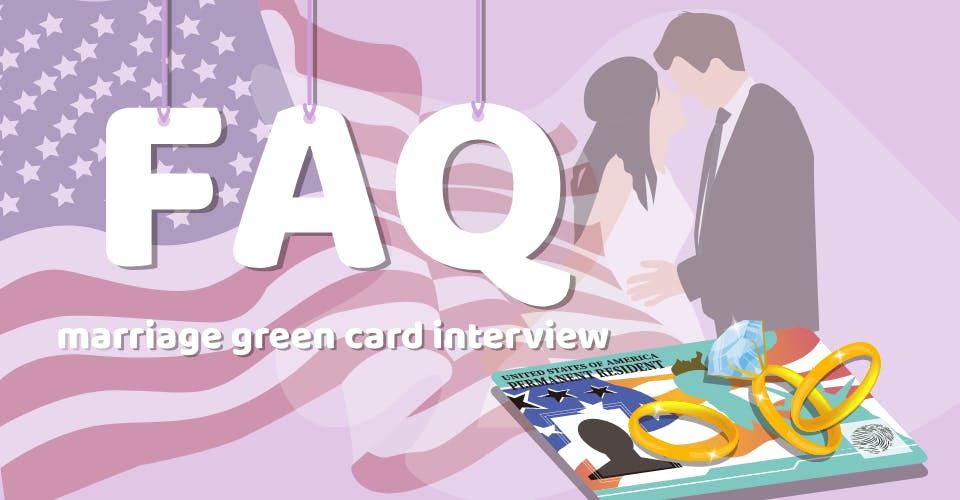Before Filling Out the Form
To start filing a Form I-130, you must do some preparation work to make sure you have all the right documents and forms of ID available so that the application process can go smoothly and without delay. You should also be aware of the eligibility requirements before filing the application. In terms of legal requirements, your spouse (your beneficiary) who is in the process of applying for a green card needs to hold a legal marriage certificate, or license.
The below section covers the step-by-step form I-130 guidance; we also offer the sample form for your reference. You can find the Form I-130 on USCIS’s website here. It is a 12-page form, and you can either complete the form online or print the form and fill out by hand if needed.
Part I: Relationship (You are the petitioner and your relative is the beneficiary)
In this section, you specify the relationship between you and your beneficiary. Please specify in details like how you and your beneficiary form the relationship.
Part II: Information About You (Petitioner)
This section includes your personal information, familial background, marital status, employment history, etc. Please make sure this section is as accurate and detailed as possible to ensure your information is credible.
Notes:
- Alien Registration Number is under the “USCIS#” category on your EAD Card; such ID number is available for lawful permanent residents. If you are a U.S. citizen, you can put N/A here.
- For Q19. Place of Your Current Marriage, please enter the place that you and your spouse were legally married. For example, if you and your spouse performed the official wedding in the city hall and held the later ceremony at the local church, please enter the address of the city hall.
- If you are a naturalized U.S. citizen, the certificate number can be found at the top right-hand side of your naturalization certificate (not USCIS Registration No.) For place of issuance, please fill in the city and state where your oath ceremony was held. Please make sure your information is aligned with that from your naturalization certificate.
- Note: For Employer History, if you are not working, keep the employer entries blank, and specify your current status in Q44. Occupation, such as “student,” “self-employed,” “unemployed,” etc., and enter the applicable dates in Question 45.
Part III. Biographic Information
This section pertains to an individual's race/ethnicity. The first box asks applicants to check if they are Hispanic or Latino. As a guide, any person who is Hispanic or Latino includes people descending from countries, and/or regions of: Cuba, Mexico, Puerto Rico, South or Central America, or another Spanish culture or origin.
For race, “White” is a person having origins in Europe, the Middle East, or North Africa.
Asian is a person having origins in any of the original peoples of the Far East, Southeast Asia, or the Indian subcontinent including, for example, Cambodia, China, India, Japan, Korea, Malaysia, Pakistan, the Philippine Islands, Thailand, and Vietnam.
Black or African American is a person having origins in any of the black racial groups of Africa.
American Indian or Alaska Native is a person having origins in any of the original peoples of North and South America (including Central America), and who maintains tribal affiliation or community attachment.
Native Hawaiian or Other Pacific Islander is a person having origins in any of the original peoples of Hawaii, Guam, Samoa, or other Pacific Islands.
Part IV. Information About Beneficiary
The section covers all the necessary information from your spouse, the beneficiary, from personal details to employment history. Please provide the information as much and correctly as possible.
Notes:
- For Social Security Number, the immigrant will not be granted a Social Security Number until he/she has lived in the U.S. and owned a work permit, or U.S. residence. Leave the space blank if your spouse does not have one.
- For Q4. Beneficiary’s Full Name, please use the married last name, and add other names used on beneficiary’s paperwork, including maiden name, in Question 5.
- For Names of Beneficiary's Spouses, the first spouse listed here should be you. Please make sure to include all the marriage details of your spouse; USCIS will check accordingly for marriage fraud and other visa-related fraud issues.
- For Information About Beneficiary's Family, please list yourself in the first person blank, and your spouse’s child(ren) if there is any. The children list is important in case the beneficiary wishes to immigrate with his/her child(ren,) or petition for them at any time in the future. Any names that were left out will likely prompt USCIS to deny the petitions of this sort in the future.
- This is to check whether your spouse has entered the U.S. lawfully. Certain types of negative immigration history may impact eligibility for the green card application (or any other type of admission to the U.S.) If your spouse has some issues in this regard, such as overstaying in the U.S., please seek help from an attorney, or contact Visa2US!
- For Travel Document Number, please check the beneficiary’s passport. It is stated on a card received by the entrants of the U.S. from the border/port officials. You can also apply for Form I-94 online from the Customs and Border Protection (CBP) website.
- The date represents the time period for your spouse to legally stay in the U.S. The date should be aligned with the one stated on Form I-94.
- For Immigration Proceedings, if your spouse has been placed in Immigration proceedings, please seek an attorney for help, or sign up Visa2US for further consultation. For such cases, it is likely that your spouse is not eligible to file for a green card at this time.
- For Q61, it is only available when your spouse is currently living in the U.S. and is filing for Adjustment of Status (Form I-485.) Feel free to contact Visa2US if you are not sure whether your situation applies to this category.
- If your spouse is not eligible to file Form I-485, you will need to list the consulate in his/her home country. USCIS will then make the final decision on which consulate your case will be delivered to, based on the location of your spouse and which of the State Department’s consulates in that country handle immigration applications/visas. If the country does not have diplomatic relations with the U.S., USCIS will designate a consulate in a nearby country to handle your application.
Part V. Other Information
This section includes information of your, the petitioner's, filing history, including this beneficiary or other relatives. The USCIS investigates and verifies the relationship accordingly.
Part VI. Petitioner's Statement, Contact Information, Declaration, and Signature
The section serves as the assertion of the aforementioned information provided.
Part VII. Interpreter's Contact Information, Certification, and Signature
Please provide the information about the interpreter if you used one.
Part VIII. Contact Information, Declaration, and Signature of the Person Preparing this Petition, if Other Than the Petitioner
Please provide the information of the preparer.
Part IX. Additional Information
The section provides extra space for additional information if not filled in the above blanks. If you need more space than what is provided, you may make copies of this page to complete and file with this petition or attach a separate sheet of paper.
When you arrive here, congrats on finishing the Form I-130! Don't forget to include all the necessary documents before you mail it/submit it online. Next, delivery!
Questions about Form I-130? Don't hesitate to contact us at contact@visa2us.com.














